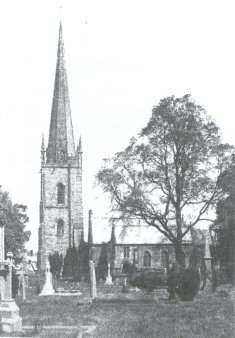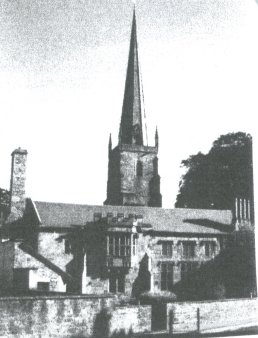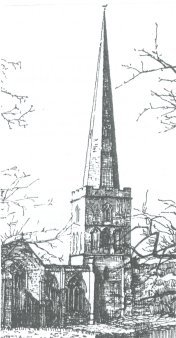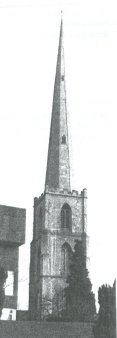NATHANIEL 'SPIRE MENDER' WILKINSON
Ross-on-Wye & District Civic Society newsletter Winter 2006 (number 91)
Article by Philip Anderson (Hon Sec)
In the first half of the 18th century it was the classical style that was at the cutting edge of English architecture. Country houses, like Stourhead in Wiltshire and Chiswick House near London, were being built in the new, fashionable Palladian style, derived ultimately from Roman classical architecture. In towns and cities terraces and squares were going up with their house frontages laid out according to classical rules of proportion, giving the typical "Georgian" look we still admire today.
But, of course, there were still many medieval gothic-style buildings, especially churches and cathedrals, that needed to be maintained and in most provincial towns there were craftsmen -in effect, master masons, sculptors and architects all rolled into one - who did this sort of work. Often there were family dynasties of such craftsmen, the work being handed on from father to son, and one of these was the Wilkinson family of Worcester. One of their number, Nathaniel Wilkinson, achieved a wider fame for his ability to re-build church spires in a slender and elegant form. He acquired the nickname "Spire-mender" and to him is attributed the rebuilding of the spire of the parish church of St Mary's in Ross.
We do not know exactly when Nathaniel was born, but he died in 1764 after a fairly long working life, so was probably born around 1700 or a little before. Both his father and grandfather were masons and his father was regularly employed on repairing the stonework of Worcester Cathedral until his death in 1736. Nathaniel took over this role and did extensive work to the Cathedral over the next few years.
Church spires are inevitably vulnerable to the elements and require frequent attention, as the late Fred Dibnah in our own time could testify. Nathaniel specialised in this work and is recorded as re-building the spire of Ledbury parish church in 1732, that of Slimbridge in 1735, Mitcheldean in 1740 and Monmouth in 1743. In each case he seems to have produced something that is taller (around 200 feet from the ground), more slender and more elegant than its medieval predecessor. However, he surpassed himself in 1751 with the spire of St Andrew's in Worcester. Its apex is 245 feet above ground and it is exceptionally slender. It was known as "The Glovers' Needle" because of the gloving industry that was located in the area. The body of the church was demolished in the 1940s after many years of disuse, but the tower and spire remain as a landmark in the city.
There is just a smidgeon of doubt about Nathaniel's involvement in Ross, because Pat Hughes' and Heather Hurley's "The Story of Ross" quoting from parish records, gives the date of the rebuilding of the spire "abt. 16 yards of it" as 1721, rather early in Nathaniel's career. It is perfectly possible that he could have worked at Ross at this date, perhaps accompanied by his father, but on the other hand 16 yards of spire sound like rather less than the total rebuild one might expect. Perhaps there was a later more thorough-going building campaign?
However that may be, there is certainly a strong family resemblance between the spire of Ross and those at Ledbury, Monmouth and St Andrew's Worcester, as the images below indicate.
 Ross Spire Ross Spire
(Click for a larger image) |  Monmouth Spire Monmouth Spire
(Click for a larger image) |
 Ledbury Spire Ledbury Spire
(Click for a larger image) |  St. Andrews Worcester Spire St. Andrews Worcester Spire
(Click for a larger image) |
They are all recessed, that is their base sits within the top of the tower without coming to its edge and the junction of tower and spire is masked by a parapet. They are all tall and slender, have six faces and the rib between each face is strengthened by a fat semi-circular moulding.
Nathaniel died in 1764 and his son, also Nathaniel, carried on his father's trade, but "Spire-mender" Wilkinson's legacy lives on in the form of these elegant spires in the South-West Midlands. Inevitably the spire at Ross has needed subsequent repair and no doubt his other spires have needed attention too. However, in their basic form they still soar to the sky today.